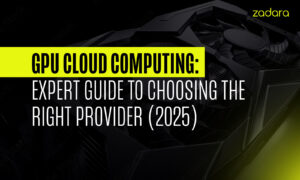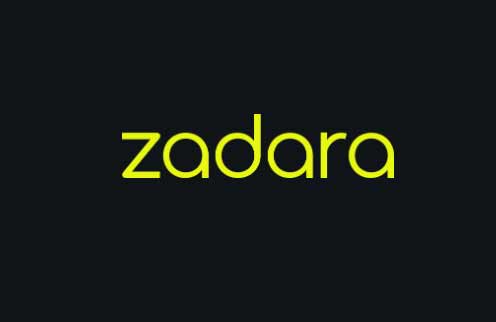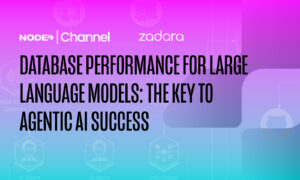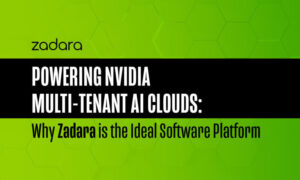The GPU cloud computing market will grow from $3.23 billion in 2023 to $49.84 billion by 2032. This dramatic rise shows how GPUs have become crucial for today’s demanding applications, especially when you have AI and machine learning workloads that need parallel processing power.
Companies in various industries now prefer cloud GPU providers over managing their own infrastructure. This lets them concentrate on their main business and boost efficiency. AWS, Microsoft Azure, Google Cloud Platform, Zadara, and DigitalOcean provide valuable services with uninterrupted data migration, easy access, framework integration, and scaling options.
Smart budget decisions need a cloud GPU pricing comparison, but companies must also think over how these specialized services support their specific needs like deep learning, scientific simulations, video rendering, and data analytics. This piece looks at the top GPU cloud computing service providers to help organizations choose wisely in 2025.
Understanding Cloud GPU Computing in 2025

Image Source: NVIDIA
Cloud GPU computing has transformed by a lot by 2025. This transformation shows how organizations now line up with high-performance computing resources. Cloud GPU technology lets users remotely access powerful graphics processing units from data centers without buying expensive hardware on-site.
Cloud GPU systems work through virtualized environments. These systems let providers allocate GPU resources through their managed infrastructure. Users can request GPU resources, and the cloud provider sets them up through virtual machines or containers. The system comes with pre-configured drivers and software tools. Multiple users can share GPU resources without interference, which makes the system highly efficient.
The market now has more than 80 specialized “neoclouds” besides major players like AWS, Azure, and Google Cloud. These GPU-focused providers include Coreweave, Lambda Labs, Nebius, Crusoe, and Zadara.
Cloud GPU providers’ performance goes beyond just offering new hardware. Network infrastructure affects workload performance by a lot. Most specialized providers give 8x400Gbit/s InfiniBand bandwidth per compute server. Google Cloud uses H100s with 8x200Gbit/s Ethernet.
Storage solutions differ between providers. Advanced GPU clouds use distributed parallel file systems like Lustre FS, GPFS, or GlusterFS. These systems enable fast shared storage that all cluster nodes can access.
Cloud GPU solutions’ cost structure follows several models:
- Pay-as-you-go pricing ties costs to actual usage
- Subscription-based plans work for consistent workloads
- Dynamic pricing on less-used inventory (providers like DataCrunch offer this)
Cloud GPU computing gives major advantages over on-premises deployment, even with possible long-term costs for high-usage workloads:
- Latest hardware becomes available instantly without capital spending
- Resources scale based on what you need
- Provider-managed infrastructure reduces operational complexity
- Distributed teams can deploy globally with ease
Organizations with changing workloads, tight budgets, or quick deployment needs get the most value from cloud GPU solutions.
Key Factors to Evaluate Cloud GPU Providers
You need to look at several key factors to pick the right GPU cloud provider. A proper assessment will line up with your workload needs and budget limits.
- GPU instance types and specifications are the foundations of your selection process. Cloud providers give you different GPU models that perform in distinct ways. The core computing power, memory capacity, bandwidth, and clock speed need careful review. To name just one example, NVIDIA’s H100 features 80GB HBM3 with 3.35 TBps memory bandwidth that works great for large-scale AI models. The A100 80GB offers 1.9 TBps bandwidth and suits general ML training better.
- Pricing models vary by a lot between providers. Most give you flexible options like pay-as-you-go, per-second billing, and cheaper spot instances. Reserved instances can save you up to 72% compared to on-demand pricing if you have steady workloads. But these need one to three year commitments, which limits your choices.
- Scalability and flexibility streamline processes directly. Look for providers with auto-scaling features that adjust resources based on what you need. Many specialized providers support multi-node clusters and containerized scaling for distributed workloads.
- Regional availability changes both performance and compliance. Data centers close to you cut down network latency, which matters a lot for live applications in finance and healthcare. Your data residency rules might also force you to use specific regions to comply with regulations.
- Support and integration capabilities determine how well your workflow runs. Check how naturally the provider merges with your current cloud services and development frameworks. Smaller, specialized providers often give more personal support for specific industries or use cases.
- Security goes beyond standard practices. The GPU isolation mechanisms need review to protect workloads from side-channel attacks on shared hardware. Providers like Google offer confidential computing features built specifically for GPU workloads that handle sensitive data.
Comparing Top GPU Cloud Computing Service Providers
The digital world of gpu cloud computing providers in 2025 has many options that match different technical needs and budgets. Let’s take a closer look at what makes each service special.

- Zadara offers fully-managed GPU infrastructure tailored for enterprise AI, HPC, and data analytics workloads. Their consumption-based pricing and global edge cloud presence make them attractive for businesses that need reliable performance across multiple geographies. Zadara’s unique approach includes private cloud flexibility with public cloud agility, enabling customers to deploy GPU-powered services securely in their own data centers, colocation facilities, or at the edge.
- DigitalOcean makes GPU access simple and straightforward. Startups, educators, and small teams who want simple deployment will find this service appealing.
- Amazon Web Services leads the market with its complete GPU lineup. Major AI companies have chosen their P-family instances for machine learning workloads. The prices run high—H100 instances cost USD 98.32 per hour for 8-GPU setups. AWS makes up for this with smooth integration into SageMaker and reliable quota systems.
- Microsoft Azure excels at enterprise-level GPU computing with strong compliance features. Their N-series has options that work best for visualization, deep learning, and HPC workloads. Azure’s H100 instances cost USD 6.98 per GPU. Companies in regulated industries that need hybrid setups will find Azure particularly useful.
- Google Cloud Platform stands out by letting you customize hardware setups. GCP users can mix and match CPU, GPU, and storage options, though getting quotas takes more time. Spot VMs can save you 60-91% off regular prices.
- Lambda Labs keeps things focused on AI development environments. Research teams and universities like their cloud instances that come ready with deep learning frameworks and CUDA drivers.
- Vast.ai shakes things up with its marketplace that connects users to GPU providers. You can save 50% or more through their auction-based system. RTX A6000 setups cost as little as USD 0.80 per hour. This makes Vast.ai perfect for budget-conscious projects.
Choosing the Right GPU Cloud Provider for Your Needs
GPU cloud computing revolutionizes how businesses tap into high-performance computing resources in 2025. This piece shows how the market has grown beyond traditional hyperscalers. Specialized providers now serve specific workloads and industries.
You should think over several factors when selecting a provider. Hardware specs directly shape performance capabilities. Different pricing models shape your long-term costs. Your resources must adapt smoothly to changing workload needs. Location availability is vital for both latency and following regulations.
Each provider shines in their own way. DigitalOcean gives economical solutions perfect for smaller teams. AWS provides detailed integration with vast cloud ecosystems. Azure leads with enterprise-grade compliance features. Google Cloud Platform gives you unmatched flexibility in hardware setup. Specialized providers like Lambda Labs, Zadara, and Vast.ai focus on specific niches with optimized environments, private deployments, or marketplace approaches.
Your choice of provider should match your workload needs rather than brand names. The best fit depends on your business needs, technical requirements, and budget limits. Most providers let you try their service free – you should test performance with your workloads before making any long-term choices.
A successful GPU cloud setup needs a full picture of what your organization requires. The market might consolidate, but GPU cloud computing remains the life-blood of advanced computational workflows. From AI development to scientific research and creative production, this detailed approach will give you maximum value from cloud GPU investments while avoiding extra costs or performance limits.





